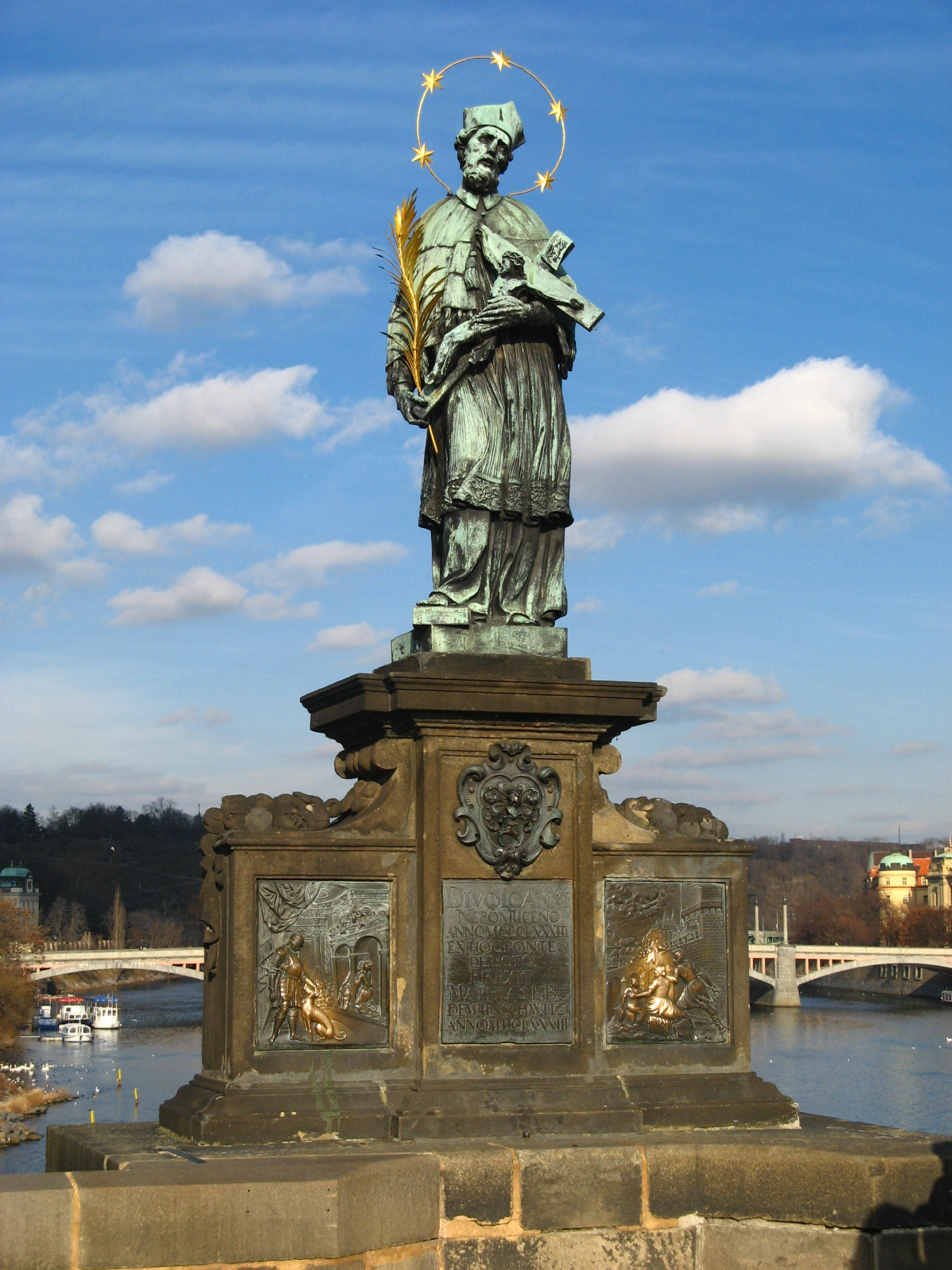From the bridge of Prague to the bridges of all Europe, a legendary account about a witness of the European cultural identity
Visiting Prague, the tourists from all over the world walk over the Charles bridge, the symbol of the city, every day. Among the numerous statues on this bridge, a statue of a saint comes out, which is particularly dear to the inhabitants of Prague. In fact, they think it brings luck if you touch it. It draws the attention of the tourists due to the peculiar and charming story of the saint which it embodies.
St. John Nepomuk, a Bohemian martyr, was drowned in 1393 after being tortured and thrown into the Vltava river, exactly from Charles bridge. Just like many other stories of Prague even this one combines elements of truth and more legendary traits. About the saint’s death there are no doubts: he was arrested, tortured and killed by Wenceslaus IV, king of Bohemia and Emperor of the Sacred Roman Empire. About the reasons which led to the king’s decision there is surely a more legendary and romantic theory according to which John Nepomuk was assassinated because of his refusal to divulge what the queen had confided to him – he was the queen’s confessor – during the sacrament. However things actually went, the image of the saint reflects his refusal to reveal the confessional secret. In fact, he is often portrayed together with a putto covering his lips with a finger in sign of silence. His halo is made up of five stars representing the five flames surrounding the corpse resurfaced in the river, but also the letters of the word “tacui” (I said nothing) related to the saint’s silence.
Another version closer to reality tells that his martyrdom was the result of the clash of power between king Wenceslaus – who wanted to set up a diocese in southern Bohemia – and the archbishop of Prague, of whom John was the vicar. Accepting both accounts, the Church has adopted the saint as the symbol of the seal of the confessional– which was instead rejected by the Hussites first and then by the Protestants – but also of the persecutions of the State against the Church.
Pope Benedict XVI, on the occasion of his visit to Prague last September, remembered that John and the other Bohemian martyrs were the victims of the attempt of the State to silence the Church. A fact that has also occurred in recent years during the political repression.
For most European citizens the statue of the Saint struck their curiosity not only for his story or for its symbolical contest. More simply, many people recognise the statue as a familiar object.

Following the popularity of the martyr’s cult, especially in the 18th century, several artworks were dedicated to his memory, as well as numerous statues which were put on the bridges of many European cities and countries. In Prague, where his tomb is kept in St. Vitus Cathedral, and in Bohemia, where there is the sanctuary of St. John near Zelená Hora, now artistic heritage. In Wroclav, In Poland, as well as in Germany – where there is a wonderful chapel in the heart of Munich – in Austria, Hungary, Switzerland, France and in other places in Central Europe.
Lots of these artworks are to be found in Italy, where the cult was really widespread and many statues can be admired in many Italian regions.
In Venice there are frescos and pictures inside many churches – the most famous among them is the altar-piece painted by Tiepolo in San Polo – and statues including the one on Canal Grande in Cannareggio. Being intimately tied to water, John has also become the saint patron of the Gondoliers.
We can find statues in Milan, inside the Sforzesco Castle and on the bridges on the Navigli; on the old bridge of Pavia, in Vigevano, in Parma and in the near town of Colorno. There was one on the bridge of St. George in Mantua, others in Valtellina, in Trento, Verona and Livorno.
In Rome, where there is an archconfraternity of San John Nepomuk, a statue has been set on the old and famous Milvio bridge, where Constantine was converted to Christianity.
In Sicily, namely in Spiazzo, in the province of Catania, John is the saint patron and in his honour a famous procession is celebrated. In Sardinia the saint is venerated at Romana, in the province of Sassari, where one of his relic is kept.
Many statues are set in places upon water or else in places which were once struck by floods or hit by tragedies related to water: for example in Finalborgo in Liguria, ravaged by a flood and in Borghetto of Valeggio, a charming village on the Mincio river. From Bergamo, where the statue stands out on the torrent Morla in the city centre, a painting by Francesco Cappella, a disciple of Tiepolo, was sent to Longarone, a small town in Veneto which many years later was destroyed, by a tragic coincidence, by a flood caused by the Vajont dam, which gave way.
John Nepomuk is then the saint of the bridges, the guardian of the seal of confession and, last but not least, the saint patron of Europe. For many the popularity of the cult has been a vehicle for the birth of that common identity which is now the base of the idea of Europe. What is sure is that he is a saint familiar to his citizens.
By Luca Pandolfi




